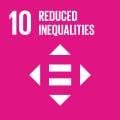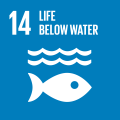Reducing inequalities and ensuring no one is left behind are integral to achieving the Sustainable Development Goals.
Inequality within and among countries is a persistent cause for concern. Despite some positive signs toward reducing inequality in some dimensions, such as reducing relative income inequality in some countries and preferential trade status benefiting lower-income countries, inequality still persists.
On the economic front, the COVID-19 pandemic has significantly increased global unemployment and dramatically slashed worker’s incomes.
COVID-19 also puts at risk the limited progress that has been made on gender equality and women’s rights over the past decades. Across every sphere, from health to the economy, security to social protection, the impacts of COVID-19 are exacerbated for women and girls simply by virtue of their sex.
Inequalities are also deepening for vulnerable populations in countries with weaker health systems and those facing existing humanitarian crises. Refugees and migrants, as well as indigenous peoples, older persons, people with disabilities and children are particularly at risk of being left behind. And hate speech targeting vulnerable groups is rising.


































Facts & Figures
Evidence from developing countries shows that children in the poorest 20 per cent of the populations are still up to three times more likely to die before their fifth birthday than children in the richest quintiles.
Social protection has been significantly extended globally, yet persons with disabilities are up to five times more likely than average to incur catastrophic health expenditures.
Despite overall declines in maternal mortality in most developing countries, women in rural areas are still up to three times more likely to die while giving birth than women living in urban centers.
Up to 30 per cent of income inequality is due to inequality within households, including between women and men. Women are also more likely than men to live below 50 per cent of the median income
Of the one billion population of persons with disabilities, 80per cent live in developing countries.
One in ten children is a child with a disability.
Only 28 per cent of persons with significant disabilities have access to disability benefits globally, and only 1per cent in low-income countries.
Want to know more about
Sustainable Development?
Simply fill out your email and message and one of our agents will get back to you.
